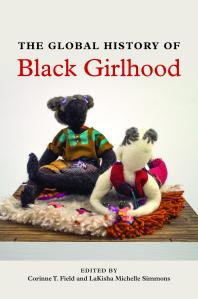Hello and welcome to February’s blog post! This month’s theme is Black History Month. To commemorate this occasion, we will learn what Black History Month is and why it is celebrated, then highlight ways you can get involved in Black History Month events here in Vancouver.

What is Black History Month?
Black History Month occurs each February. According to the Government of Canada, It is a month of “events and celebrations that honour the legacy and contributions of Black people in Canada and their communities.” There is also a unique theme each year. The 2025 theme is “Black Legacy and Leadership: Celebrating Canadian History and Uplifting Future Generations.” The goal of this theme is to focus on the long history of Black communities in Canada, acknowledging the diversity of those communities throughout Canada’s past. It also looks forward towards the future, underscoring the legacy that past communities have passed on to current Black Canadians.
Why Do We Recognize Black History Month?
Black History Month exists because of the history of anti-Black racism in Canada, as well as in North America more widely. To understand why this month is important today, we must understand what happened in the past. Black Canadians’ contributions to society were frequently ignored throughout Canadian history. White settlers did not consider stories of Black achievement and culture to be worth telling. As a result, the Government of Canada explains that Black History Month is a time to learn about those untold stories and to recognize the role of Black people in Canada.
The Canadian Encyclopedia provides a starting point to learn this history. Its page “Black History Month in Canada” explains that Black History Month first began in the United States, then spread to Canada. Dr. Carter G. Woodson, a historian of African Americans, first created a week of Black history education in 1926, which caught on and expanded in subsequent years. Dr. Woodson chose the month of February because Abraham Lincoln and Frederick Douglass— two important figures who worked to end slavery in the United States— were born in February. Black History Month became a national observance in the United States in 1976.
In Canada, informal Black history observances happened throughout the 1930s and 1940s. Later, two founders of the Ontario Black History Society petitioned Toronto to adopt Black History Month in 1979. Activists continued pressing city and provincial governments to officially recognize Black History Month throughout the 1980s and 1990s, with some success, as Ontario recognized the month in 1993. At the federal level, the House of Commons passed a motion to recognize Black History Month nationwide in 1996. The Senate then officially approved the motion in 2008 after a long period of stalling. This brings us to today’s period of commemorating Black History Month nationally each year.
Black History Month Events in Vancouver
Want to participate in Black History Month this year? Here are some events happening locally in Vancouver.
The Vancouver Public Library is hosting two film screenings at its central branch in downtown Vancouver. The films highlight the intersectional identities of Afro-Latinx people. The screenings will also include a moderated discussion session after viewing the film.
- On February 19, attend a screening of Pelo Malo. This film depicts “a Venezuelan boy’s desire to straighten his curly hair.” It discusses “anti-Blackness and homophobia in Latin America,” as well as “the white-washing of Latinx childhood.”
- On February 26, attend a screening of Dólares de Arena. This film depicts “an older European woman becoming enchanted with a young Dominican woman who must struggle to make ends meet.” It discusses “portrayals of Blackness and queerness in Latinx cinema, the intersections of femininity and Blackness, and the impact of class and whiteness on queer dynamics in Latin America.”
The Vancouver International Film Festival is screening a variety of films to commemorate Black History month throughout February. You can explore their events lineup here and book tickets to view films made by Black filmmakers.
Afro Van Connect and Black Space Media INC are hosting a Black History Walking Tour. The tour will begin at 1:00pm on February 15 and 22 at Andy Livingstone Park at Union & Quebec St. The walking tour will move through the historic neighbourhood of Strathcona in East Vancouver, highlighting the cultural heritage of the Black community in this neighbourhood throughout history. The tour will last approximately 45 minutes.
Black History Month Events at UBC
You don’t need to leave campus to participate in Black History Month! A number of events are taking place at UBC throughout February. You can view a full list of events here. I’ll also describe some that I would like to highlight.
The Black Entrepreneurship and Research Symposium will take place on February 28 from 10:00 AM to 3:30 PM. This event will bring together business owners, policy makers, and researchers who are committed to advocating for Black entrepreneurship. The symposium speakers will discuss plans for policy change that benefits Black entrepreneurs, with a focus on bridging research into actionable steps forward.
The Black Excellence in STEM Speaker Series includes multiple speaker events highlighting the outstanding contributions of Black people in Science, Technology, Engineering, and Math (STEM) fields. On February 26, Dr. Anotida Madzvamuse of the Department of Mathematics will give a presentation titled “Unravelling the mathematics for single cell dynamics.”
Titles at UBC Library
Beyond attending events, you can also make use of UBC Library books and media to learn more about Black history. Check out the following selections:





Field, C. T., Simmons, L. M., & ProQuest (Firm). (2022). The global history of black girlhood (1st ed.). University of Illinois Press. [Available at UBC Library]
Hodes, C., Tibe Bonifacio, G., Bonifacio, G. T., & DOAB: Directory of Open Access Books. (2023). In Tibe Bonifacio G., Hodes C.(Eds.), Racism in southern Alberta and anti-racist activism for change (1st ed.). Athabasca University Press. https://doi.org/10.15215/aupress/9781778290008.01
McCalman, G., & Reynolds, A. (2022). Illustrated black history: Honoring the iconic and the unseen (First ed.). Harper One, an imprint of HarperCollinsPublishers. [Available at UBC Library]
Rogers, M. L., De Gruyter Princeton University Press Complete eBook-Package 2023, & Project Muse. (2023). The darkened light of faith: Race, democracy, and freedom in african american political thought (1st ed.). Princeton University Press. [Available at UBC Library]
Moore, L. N. (2021). Teaching black history to white people (First ed.). University of Texas Press. https://doi.org/10.7560/324851
UBC Publications in cIRcle
cIRcle is UBC’s institutional repository. It is Open Access, meaning that members of the UBC community can submit their research and teaching materials for anyone to access. Here are some items in cIRcle that showcase excellent work in the areas of Black history and anti-racism:
Flynn, K., De Sousa, I., Dordunoo, D., & Wytenbroek, L. (2021, February 25). Black (in)Visibility: Black Nurses in Canada who Paved the Way. doi:http://dx.doi.org/10.14288/1.0398203
MacIntyre, T. M. (2020). White feminist fragility: From part of the problem to radical allyship (T). University of British Columbia. Retrieved from https://open.library.ubc.ca/collections/ubctheses/24/items/1.0390302
Mohamed, M. (2023). Reconstructing Vancouver’s black community from the history of invisibility: Analysis of the role of black entrepreneurship in British Columbia, Canada (T). University of British Columbia. Retrieved from https://open.library.ubc.ca/collections/ubctheses/24/items/1.0431415
Pattar, S. K. (2024, November 27). Equity Unchained: Leveling Up Anti-Racist Policies In Lower Mainland Schools [G]. doi:http://dx.doi.org/10.14288/1.0447403
Wytenbroek, L., Adique, M., Alazar, W., Binning, N., Bishop, S., Bobyn, A., … Sackey-Forson, E. (2023, February 23). Black History Month 2023 Historical Considerations on Nursing Education Across Canada [P]. doi:http://dx.doi.org/10.14288/1.0432295
Web Sources Cited
Government of Canada. (2025a, January 31). About Black History Month. https://www.canada.ca/en/canadian-heritage/campaigns/black-history-month/about.html
Government of Canada. (2025b, January 31). February is Black History Month. https://www.canada.ca/en/canadian-heritage/campaigns/black-history-month.html
Williams, Dorothy W. (2022, January 10). Black History Month in Canada. The Canadian Encyclopedia. https://www.thecanadianencyclopedia.ca/en/article/black-history-month-in-canada




















